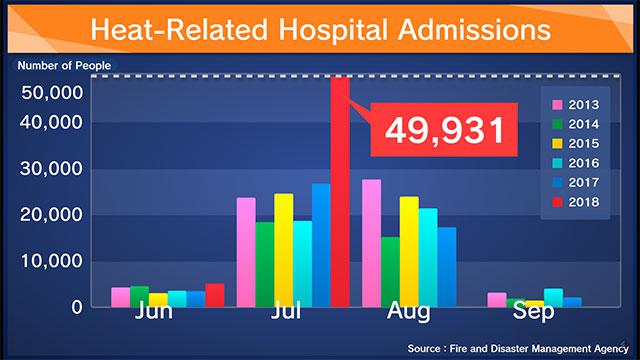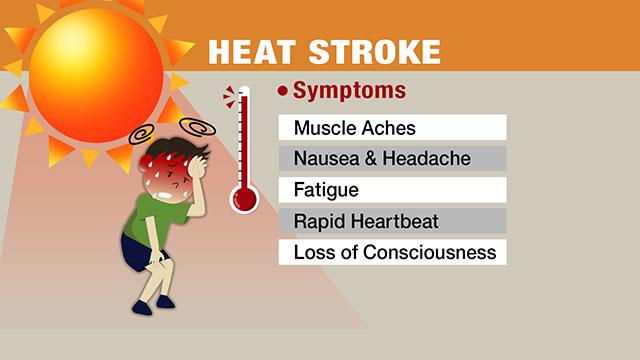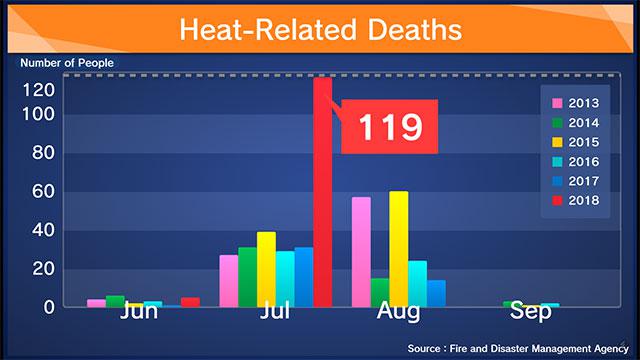Record Temperatures
This year's hot weather has been unprecedented. A temperature of 41.1 degrees was recorded outside of Tokyo on July 23th, the highest in Japan's history.

Data from the Meteorological Agency shows that temperatures started spiking into the upper-30s on July 14th. In the video above, the changes from green to orange and red indicate temperatures rising from 35 toward 40 degrees.
Danger of Heatstroke
The temperatures have led to a rise in reported cases of heat-related illnesses and deaths.
According to the Fire and Disaster Management Agency, almost 50,000 people were admitted to hospitals across the country in July due to heat-related illnesses. This is about double the number from the same period last year.

119 people died of heatstroke during the month, also far surpassing last year's number.
In one case, a caregiver found two elderly sisters dead in a public housing unit. No windows were open, and there was no air conditioner. In another, a woman found her 84-year-old husband dead at home. The room was also without an air conditioner.
Protect Yourself
Being able to identify the signs of heatstroke is crucial in this weather. Symptoms include muscle aches, nausea and headache, fatigue, rapid heartbeat, and loss of consciousness. If you start exhibiting these signs, head to a hospital.
To prevent heatstroke, consume lots of water and salt (for proper thermoregulation); use adequate cooling measures such as air conditioning, fans, parasols, and hats; wear light-colored clothing; limit alcohol consumption; and do not stay in the sun.

Japan's Ministry of the Environment has launched a website to keep people informed. It shows the heat stress index, WBGT, which indicates how dangerous the temperature is to the human body. The site also shows the different peak times for heat across the country, providing two days of forecasts.

